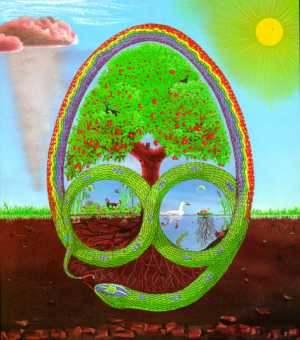
Permaculture is a way of living; it involves sustainability, ethics, community living, harmony with nature, appropriate technology, organic living, organic farming, etc. It is a way to integrate nature and people in the most sustainable way. This word, permaculture (that was originally derived from permanent agriculture), was originally coined by two Australians named David Holmgren and Bill Mollison in response to the challenges related to our survival.In permaculture, ethics and design principles are used to help us make good decisions for the people and the environment. Permaculture itself is an ethical design system and can be applied to both the home and the community. Also it can be applied in rural and urban areas.
Permaculture also involves three aspects which can be briefly described as follow:Care for the land: Actions to protect the environment and improve it. Earth should be seen as a whole.Care for the people: It involves the physical and psychological aspects, for example providing food and shelter, natural medications, reduce daily hard work, and provide equal opportunities for all people.Care for the future: It is very important if we want to conserve our resources. Some of the aspects that it involves are recycling, planning, cooperation not competition, supporting local economy, and the use of renewable energy and resources.The application of permaculture concepts helps us in reducing costs if we implement different alternatives that allow us to maximize efficiency and production. For example you can plant vegetables in an area where water drains from the sink (as long as you use biodegradable dish washing soaps that are harmless to the plants), this way reducing your plant watering time. While using this concept you save time that you can use for other tasks or for recreation, this way increasing your quality of life.
When working with permaculture you apply also design principles. For example, you can start plotting what you originally have in your home (for example recreational areas, gardens, unused areas, etc.); then, you can make changes in your drawing for the desired areas according to your ideas. For example, you can take into consideration the times when the sun rises and falls so you can plant according to the intensity of the sun received in the area. Also, you can verify which areas are the best for planting different kinds of vegetables, and then strategically locate the plants.In permaculture design, zones are used to specify the areas where you are going to accommodate plants, animals, recreational areas, etc. These zones can be identified with numbers, for example from 0 to 5, and can be thought as concentric circles, each one representing a zone where the first one can be used for the area that is more concurrent, like the house. The last zone can be used for the least used area, this way maximizing efficiency and production.When we practice permaculture we are building a natural capital that yields benefits for today and for the future.02/10/2009 por Yamila Esther Gonzalez http://www.naturalfreechoice.com